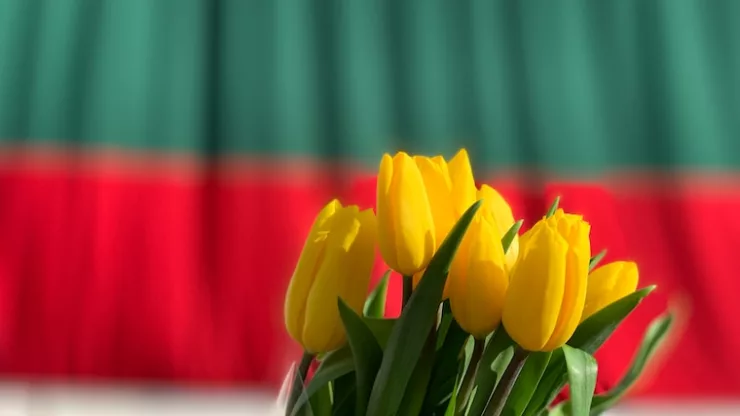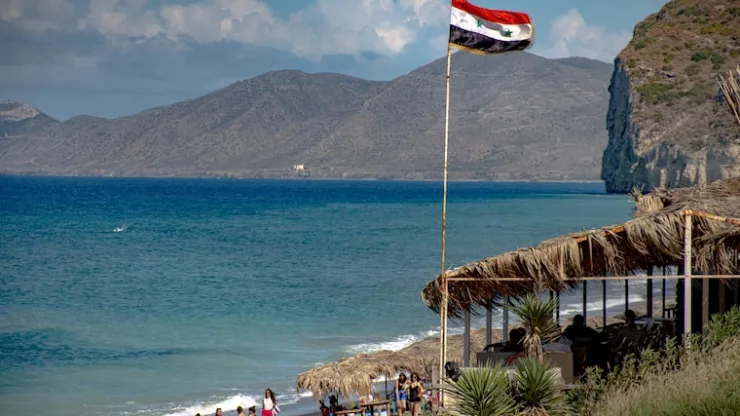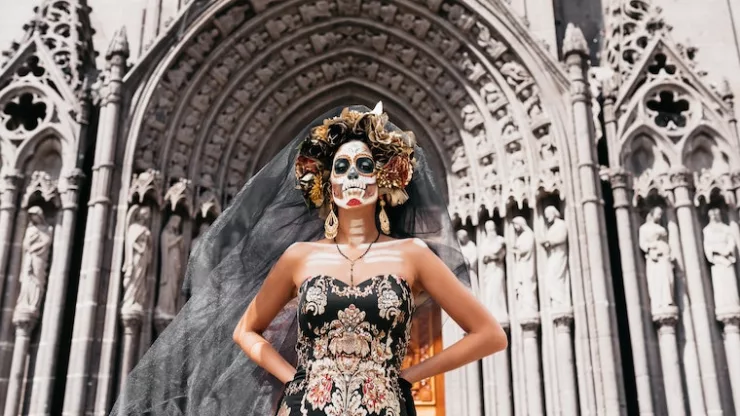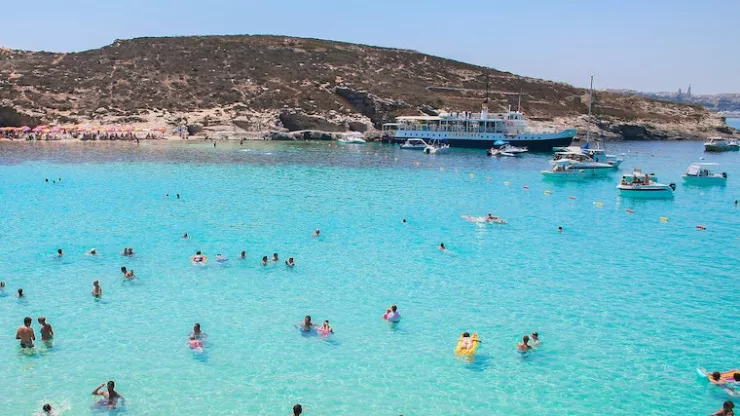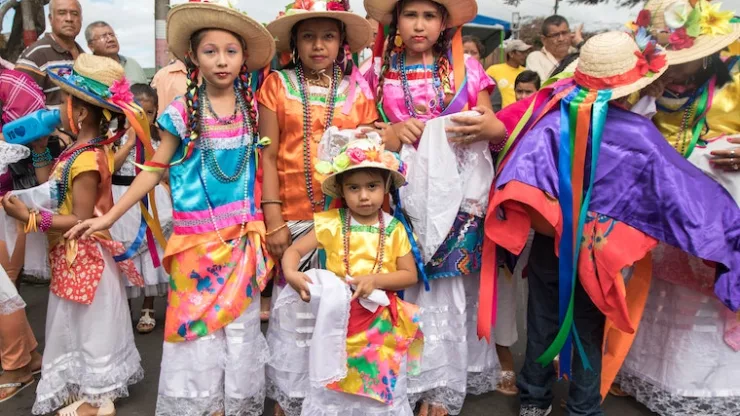Quick Facts
Capital: Vilnius
Population: 2.79 million
Official Language: Lithuanian
Currency: Euro (€)
National Symbol: Vytis
Lithuania, a small yet captivating country in northeastern Europe, has much to offer visitors seeking an off-the-beaten-path destination.
As one of the Baltic States, Lithuania boasts a rich history, diverse culture, and stunning natural landscapes that draw travelers in.
From the enchanting Old Town of Vilnius to the breathtaking beauty of its national parks, there’s no shortage of fascinating experiences awaiting you in this Baltic gem.
In this article, we’ll explore 27 captivating facts about Lithuania, delving into its history, traditions, and unique attractions, offering you a comprehensive insight into this remarkable country.
Facts About Lithuania
- Lithuania is one of three Baltic States. It’s located in northeastern Europe, nestled between Latvia, Belarus, Poland, and the Russian exclave of Kaliningrad. Lithuania’s coastline stretches 90 kilometers along the Baltic Sea.
- It gained independence from the Soviet Union on March 11, 1990. Lithuania was the first Soviet republic to declare independence, leading to the eventual dissolution of the USSR in 1991.
- Lithuania’s flag consists of horizontal stripes in yellow, green, and red. The yellow represents the sun, the green signifies the country’s lush forests, and the red symbolizes courage and the blood shed for Lithuania’s freedom.
- Vilnius, Lithuania’s capital, is known for its stunning baroque architecture. The Old Town of Vilnius is a UNESCO World Heritage site, featuring cobblestone streets, ornate churches, and picturesque squares.
- The geographical center of Europe is located in Lithuania. The exact spot is near the village of Bernotai, about 26 kilometers northwest of Vilnius.
- Lithuanians are proud of their language, which is one of the oldest in Europe. Lithuanian is part of the Baltic branch of the Indo-European language family and retains many archaic features.
- Basketball is Lithuania’s national sport. The country has a rich basketball history, and the Lithuanian national team has won numerous European championships and Olympic medals.
- Lithuania is one of the world’s biggest producers of amber. Often called the “Baltic Gold,” amber is fossilized tree resin, and the Baltic region has some of the world’s largest deposits.
- Lithuania has a unique tradition of cross-crafting. Lithuanians have been crafting intricate wooden crosses, known as Hill of Crosses, for centuries. It’s a symbol of national and religious identity and was inscribed on the UNESCO list of Intangible Cultural Heritage in 2008.
- Lithuania has a thriving craft beer scene. Small breweries are found throughout the country, producing unique and traditional beer styles that are gaining international recognition.
- The Lithuanian national dish is Cepelinai, large potato dumplings filled with meat, cheese, or mushrooms. They’re named after zeppelins due to their shape and are served with sour cream and bacon bits.
- Lithuania is home to a diverse ecosystem, including five national parks. The most famous is Aukštaitija National Park, which features beautiful lakes, forests, and traditional wooden villages.
- Lithuania’s traditional music and dance are rooted in ancient pagan rituals. The Sutartinės are a unique form of polyphonic folk songs, and Lithuanian folk dances showcase vibrant costumes and intricate steps.
- Lithuania has a high literacy rate of 99.8%. Education is highly valued, and the country has a well-developed network of universities, including the historic Vilnius University, founded in 1579.
- The Lithuanian currency, the Litas, was replaced by the Euro in 2015. Lithuania became the 19th member of the Eurozone and the last Baltic State to adopt the Euro.
- Lithuania’s unique landscape features more than 6,000 lakes. The country’s largest lake, Lake Druksiai, is also its deepest, reaching a depth of 65 meters.
- The Curonian Spit is a unique geographical feature in Lithuania. This narrow, 98-kilometer-long sand dune peninsula separates the Curonian Lagoon from the Baltic Sea and is shared with Russia.
- Lithuania has a rich tradition of hot air ballooning. Vilnius is one of the few European capitals where hot air ballooning is permitted, and the Lithuania Hot Air Balloon Championship is held annually.
- Lithuania celebrates two Independence Days. The first, on February 16, marks the declaration of independence from German and Russian occupation in 1918. The second, on March 11, commemorates the restoration of independence from the Soviet Union in 1990.
- The Lithuanian Song and Dance Festival is a major cultural event held every four years. The UNESCO-inscribed festival showcases thousands of performers in colorful costumes, preserving the country’s musical and dance heritage.
- Lithuania has one of the fastest public Wi-Fi networks in the world. The country has prioritized digital development, making it an attractive destination for tech entrepreneurs and remote workers.
- The Museum of Genocide Victims in Vilnius is a powerful reminder of Lithuania’s turbulent history. The museum is housed in a former KGB prison and documents the Soviet occupation and the struggle for independence.
- Lithuania has a unique folklore creature called the Laumė. These supernatural beings are similar to fairies and often appear in Lithuanian legends and tales, symbolizing the forces of nature.
- Lithuania is home to the Hill of Witches.an open-air sculpture gallery located on the Curonian Spit. The park features more than 80 wooden sculptures depicting Lithuanian folklore characters and scenes.
- Lithuania is known for its elaborate Easter traditions. Velykos, the Lithuanian Easter celebration, includes egg painting, egg rolling competitions, and swinging on traditional wooden swings.
- Lithuania has a unique traditional beverage called gira. It is a non-alcoholic, fermented drink made from rye bread, water, sugar, and natural flavors, and is considered a refreshing summer beverage.
- Lithuania is home to the world’s only statue of Frank Zappa. Although the American musician had no connection to Lithuania, a fan club erected the bronze sculpture in Vilnius as a symbol of freedom of expression after the country gained independence from the Soviet Union.
Conclusion
Lithuania, with its remarkable blend of history, culture, and natural beauty, is a true hidden gem in the Baltic region.
As we’ve discovered through these 27 fascinating facts, Lithuania offers visitors an unforgettable experience, from the cobblestone streets of Vilnius to the awe-inspiring landscapes of its national parks.
With a rich heritage in music, dance, and folklore, as well as a thriving craft beer scene and mouthwatering cuisine, Lithuania is sure to capture the hearts of travelers seeking a unique and memorable adventure.
So, whether you’re planning your next European getaway or just eager to learn more about the world’s hidden gems, Lithuania is a destination that should undoubtedly be on your radar.
Lithuania FAQ
What is Lithuania famous for?
Lithuania is famous for its beautiful nature, rich history, unique traditions, and vibrant culture.
Some popular attractions include the Trakai Island Castle, Hill of Crosses, Curonian Spit, and Vilnius Old Town.
The country is also known for its amber craftsmanship and distinctive folk art.
What language is spoken in Lithuania?
The official language of Lithuania is Lithuanian, which is one of the oldest living languages in the world.
It belongs to the Baltic language group and is closely related to Latvian. Most Lithuanians also speak English, especially in urban areas and tourist destinations.
Is Lithuania a safe country to visit?
Yes, Lithuania is generally a safe country for travelers.
As with any destination, it’s essential to take common-sense precautions, such as being aware of your surroundings, keeping your belongings secure, and avoiding poorly lit or deserted areas at night.
What is the currency used in Lithuania?
The official currency of Lithuania is the Euro (€). Credit cards are widely accepted, and ATMs can be found in most cities and towns.
However, it’s always a good idea to carry some cash, especially when visiting smaller establishments or rural areas.
When is the best time to visit Lithuania?
The best time to visit Lithuania depends on your preferences and the activities you’re interested in.
Spring (April-May) and autumn (September-October) offer milder weather and fewer tourists, making it an ideal time to explore cities and cultural attractions.
Summer (June-August) is the peak tourist season, with warm weather and numerous outdoor events and festivals.
Winter (December-February) can be cold and snowy, but it’s a great time to visit if you enjoy winter sports or want to experience Lithuania’s Christmas markets and festivities.
Do I need a visa to visit Lithuania?
Lithuania is a member of the European Union and the Schengen Area.
Visitors from many countries, including the United States, Canada, Australia, and Japan, can enter Lithuania without a visa for short stays of up to 90 days within a 180-day period.
However, it’s always a good idea to check visa requirements with your local Lithuanian embassy or consulate before your trip.
What is the national sport of Lithuania?
The national sport of Lithuania is basketball. The country has produced numerous NBA players and consistently performs well in international competitions.
Lithuania also has a unique national sport called Ričkoball, which is a combination of baseball and cricket.
What are some traditional Lithuanian dishes?
Some traditional Lithuanian dishes include:
- Cepelinai: Potato dumplings filled with meat or cheese, often served with sour cream and bacon bits.
- Šaltibarščiai: A cold beet soup made with beets, cucumbers, dill, green onions, and hard-boiled eggs, usually served with boiled potatoes on the side.
- Kibinai: Pastries filled with various ingredients such as meat, vegetables, or cheese, originating from the Karaim ethnic minority in Lithuania.
- Bulviniai blynai: Potato pancakes served with sour cream, often accompanied by applesauce or mushroom sauce.
- Šakotis: A traditional Lithuanian cake, also known as the “tree cake,” made by pouring layers of dough onto a rotating spit and baking it over an open flame.
What are some unique Lithuanian traditions?
Lithuania has several unique traditions, including:
- Užgavėnės: An annual festival held in February, where people dress up as devils, witches, and other mythical creatures to chase away winter.
- Kaziukas Fair: An annual fair held in Vilnius to celebrate Saint Casimir, the patron saint of Lithuania, featuring handicrafts, food, and various performances.
- Lithuanian Song and Dance Festival: A massive cultural event held every four years, recognized by UNESCO, that brings together thousands of singers, dancers, and musicians from around the world to celebrate Lithuanian culture.
- Cross-crafting: A Lithuanian folk art tradition of creating intricate wooden crosses and wayside shrines, recognized as a UNESCO Intangible Cultural Heritage.
How do I get around Lithuania?
Lithuania has a well-developed transportation system, making it easy to explore the country. Options for getting around include:
- Car rental: Renting a car offers flexibility and convenience, especially for visiting more remote areas and national parks.
- Bus: Intercity buses are affordable and reliable, with frequent connections between major cities and towns.
- Train: Lithuania’s train network is limited but offers a comfortable and scenic way to travel between some destinations, such as Vilnius and Kaunas or Klaipėda.
- Cycling: Lithuania has an extensive network of cycling routes, making it a great destination for bike enthusiasts.
What are some popular souvenirs from Lithuania?
Popular souvenirs to bring home from Lithuania include:
- Amber jewelry: Lithuania is famous for its amber craftsmanship, and you can find beautiful, unique pieces in various shapes and colors.
- Linen products: High-quality linen items, such as tablecloths, napkins, or clothing, make for a beautiful and practical souvenir.
- Ceramic pottery: Traditional Lithuanian pottery features unique designs and patterns, making it a great addition to any home.
- Wooden crafts: Carved wooden items, such as crosses, boxes, or kitchen utensils, showcase the skill of Lithuanian artisans.
- Local delicacies: Bring home some traditional Lithuanian treats, such as šakotis cake, honey, or dried fruit and berries.
Can I use my electronic devices in Lithuania?
Lithuania operates on a 230V, 50Hz electrical system, with Type F power sockets.
If you’re traveling from a country with a different voltage or plug type, you will need a voltage converter and/or a plug adapter to use your electronic devices.
What is the time zone in Lithuania?
Lithuania is in the Eastern European Time (EET) zone, which is 2 hours ahead of Coordinated Universal Time (UTC+2). During daylight saving time, from the last Sunday in March to the last Sunday in October, Lithuania observes Eastern European Summer Time (EEST), which is UTC+3.
What are some must-visit places in Lithuania?
While in Lithuania, consider visiting these must-see destinations:
- Vilnius: The capital city, home to the stunning Vilnius Old Town, Gediminas Tower, and the vibrant arts scene in the Užupis district.
- Trakai: A picturesque town located just outside of Vilnius, featuring the stunning Trakai Island Castle and beautiful lakes.
- Kaunas: Lithuania’s second-largest city, boasting a charming Old Town, the Pazaislis Monastery, and the Ninth Fort Museum.
- Klaipėda: A port city on the Baltic Sea, offering access to the Curonian Spit and its beautiful sand dunes.
- Nida: A lovely seaside town on the Curonian Spit, known for its picturesque landscapes, the Nida Art Colony, and the Thomas Mann Cultural Centre.
- Hill of Crosses: A unique and powerful pilgrimage site, featuring thousands of crosses left by visitors over the years.
- Druskininkai: A popular spa town, offering mineral water treatments, the Grūto Parkas sculpture park, and the Snow Arena indoor skiing facility.
What are some interesting facts about Lithuania’s history?
- Lithuania was once the largest country in Europe, covering present-day Lithuania, Belarus, Ukraine, and parts of Poland and Russia.
- The Grand Duchy of Lithuania and the Kingdom of Poland formed a close alliance through the Union of Krewo in 1385 and later established the Polish-Lithuanian Commonwealth in 1569.
- Lithuania was the last pagan country in Europe to convert to Christianity, with the official conversion taking place in 1387.
- In 1990, Lithuania became the first Soviet republic to declare its independence, leading to a peaceful transition and the eventual collapse of the Soviet Union.
- Lithuania joined the European Union and NATO in 2004, further strengthening its ties to Western Europe and its commitment to democracy and security.
What wildlife can be found in Lithuania?
Lithuania’s diverse landscapes provide a habitat for a wide range of flora and fauna. Some common wildlife species found in Lithuania include:
- Mammals: European bison, elk, roe deer, red deer, wild boars, beavers, lynx, and grey wolves.
- Birds: White-tailed eagles, black storks, great bitterns, Eurasian pygmy owls, and European rollers.
- Reptiles and amphibians: European pond turtles, European tree frogs, smooth newts, and viviparous lizards.
- Fish: Pike, perch, bream, eel, and various species of trout.
Many of these species can be observed in Lithuania’s national parks and nature reserves, such as Aukštaitija National Park and the Varnikai Cognitive Walking Path.

I am a fun fact enthusiast and creator of Facts On Tap.
I love to share my knowledge and curiosity with readers and inspire them to learn something new every day.
When I’m not writing, I enjoy traveling, reading, and playing trivia games with my friends.
